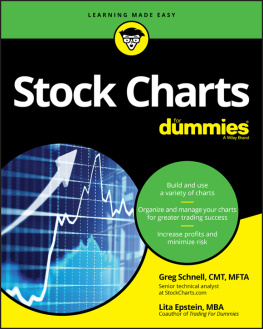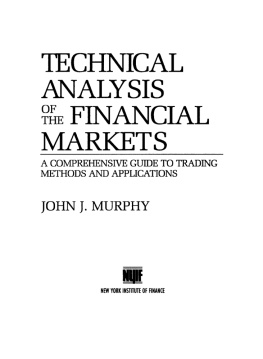| Big Book of Chart Patterns |
| Trading Tips |
| Riddler (Nov 2019) |
|
| Tags: | Technical Analysis |
| Technical Analysisttt |
When most investors think of stock charts, they probably imagine a bunch of dots and lines
But what many of them DONT know is that those dots and lines often form extremely important patterns that signal HUGE moves in the prices of stocks.
In fact, Id say three out of four investors cant properly read charts.
But today, that all changes
After all, the minute a stock chart pattern becomes readily apparent
Its SO much easier to make huge sums of cash.
Thats why weve been burning the midnight oil in putting together the most comprehensive ebook on stock charting Ive ever seen.
And it contains some incredibly explosive information
- Which patterns are red-hot buy now indicators
- Which patterns show a stock is about to crash
- Which patterns have historically made people RICH
Thats just the tip of the iceberg, too.
We cover 50 total patterns - the most explosive patterns in the market patterns that could mean the difference between losing everything and earning a lasting legacy of wealth.
Big Book
of
Chart Patterns

Trading Tips
This book is
gifted to book-lovers by
Rddler & Cadzbuddy
Introduction
The origins of chart patterns can be found in the work of Charles Dow in a series of articles published in his editorials for The Wall Street Journal from 1900-1902. His views were later developed into what is now known as Dow Theory. Dows observations of price trends and his understanding or trend based on the progression of peaks and troughs form the foundation for modern-day technical analysis.
The observations that Dow made, and the methodologies found in technical analysis are fractal in nature. This means that the techniques used can be applied to any aggregation period whether its intraday, daily, weekly or monthly.
As you study charts and look to identify patterns, youll want to spend time to identify the successive peaks and troughs or highs and lows. Also, as part of your pattern recognition it is important to be able to identify the previous trend based on the aggregation period being used. The combination of the previous trend and the current highs and lows will form the foundation for proper chart pattern recognition.
This resource is intended to introduce you to 50 different price patterns. With every price pattern there is a setup, a trigger and a projected move. For each pattern, there is a description of whether the pattern is bullish, bearish or non-directional. Whether its a signal of a continuation of the trend, a reversal of the trend, or is non-directional. Also, there is a description of how volume develops during the formation of the pattern, and how to establish a price projection based on the measuring technique for each pattern.
Statistical references in this book is taken from the Encyclopedia of Chart Patterns by Thomas Bulkowski. His work represents the most comprehensive study of the effectiveness of chart patterns to date.
CHART PATTERNS
Broadening Bottoms

Directional Bias: Bullish
Pattern Type: Reversal
Pattern Description: This pattern forms at the tail end of a downtrend. The pattern takes on the appearance of a megaphone as the price forms a series of higher highs and lower lows throughout the formation. The pattern needs at least two highs and lows to be a valid formation.
Volume Description: The volume should diminish through the pattern up until the breakout
Breakout Confirmation: A close above the upper trend-line on above average volume.
Measuring Technique: Measure from the highest high to the lowest low before the breakout, and add that amount to the highest high for the price target.
Amount to the highest high for the price target.
Year lows tend to perform better.
Broadening Tops

Directional Bias: Bearish
Pattern Type: Reversal
Pattern Description: This pattern forms at the tail end of an uptrend. The pattern takes on the appearance of a megaphone as the price forms a series of higher highs and lower lows throughout the formation. The pattern needs at least two highs and lows to be a valid formation.
Volume Description: The volume should diminish through the pattern up until the breakout
Breakout Confirmation: A close below the lower trend-line on above average volume.
Measuring Technique: Measure from the highest high to the lowest low before the breakout and subtract that amount from the lowest low for the price target.
That amount from the lowest low for the price target.
Year highs tend to perform better.
Bump-and-Run Reversal Bottoms

Directional Bias: Bullish
Pattern Type: Non-Directional
Pattern Description: This pattern is comprised of three phases and looks similar to a frying pan. There is the lead-in phase, the bump phase and the uphill run. The lead-in phase is the handle of the frying pan before a larger decline. Following the decline, the bump phase forms as the price forms a flat or rounded bottom. The uphill run phase is after the breakout. For this type of formation to be analyzed an arithmetic chart will need to be used.
Volume Description: Volume is typically high at the beginning of each phase and decreases throughout each phase.
Breakout Confirmation: A close above the upper trend-line drawn across the highs, during the lead-in phase, with above average volume.
Measuring Technique: The price target is the highest point of the lead-in phase.
Statistical Notes: Wider formations tend to perform better than narrower formations, and a throwback
Bump-and-Run Reversal Tops

Directional Bias: Bearish
Pattern Type: Non-Directional
Pattern Description: This pattern is comprised of three phases and looks similar to a mountain range. There is the lead-in phase, the bump phase and the downhill run. The lead-in phase is like a small range of foothills before the larger mountains. Following an advance, the bump phase forms as the price forms a flat or rounded top. The downhill run phase is after the breakout. For this type of formation to be analyzed an arithmetic chart will need to be used.
Volume Description: Volume is typically high at the beginning of each phase and decreases throughout each phase.
Breakout Confirmation: A close below the lower trend-line drawn across the lows, during the lead-in phase, with above average volume.
Measuring Technique: The price target is the lowest point of the lead-in phase.
Statistical Notes: Wider formations tend to perform better than narrower formations, and a pullback
Cup and Handle
















